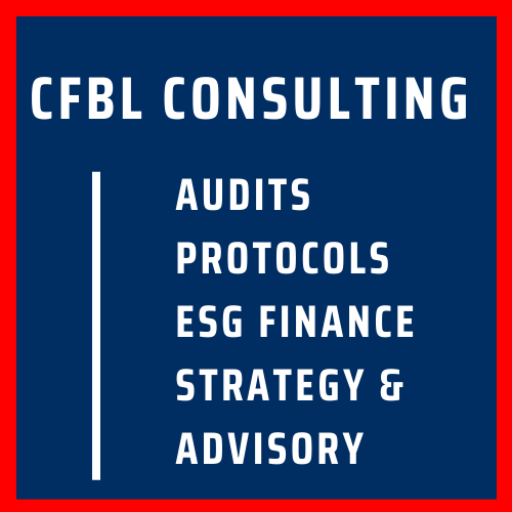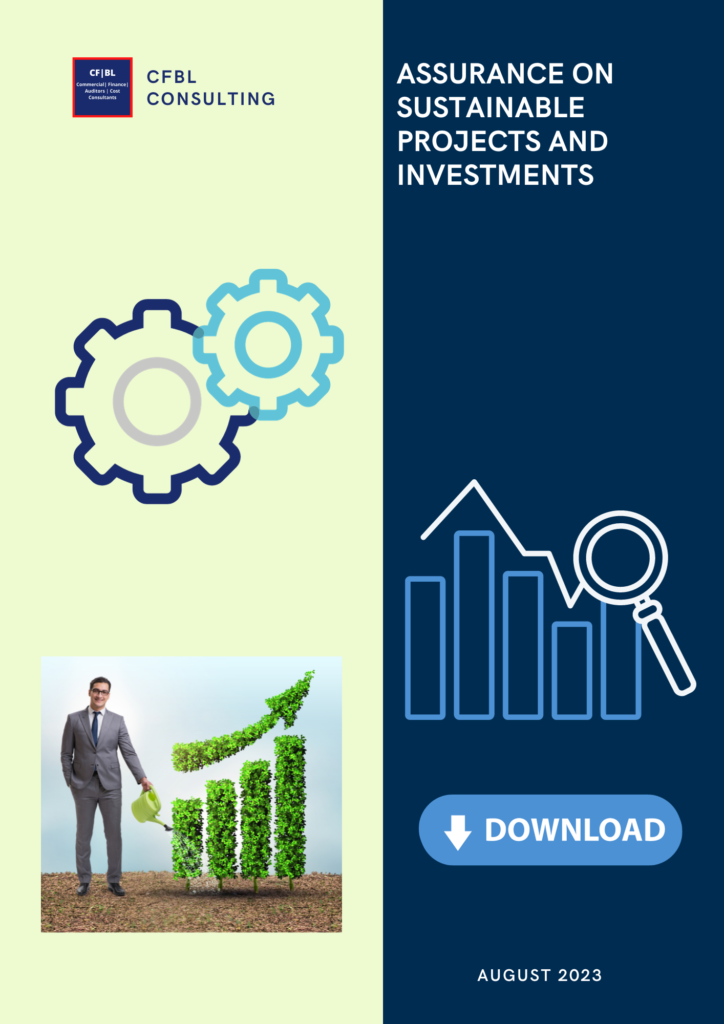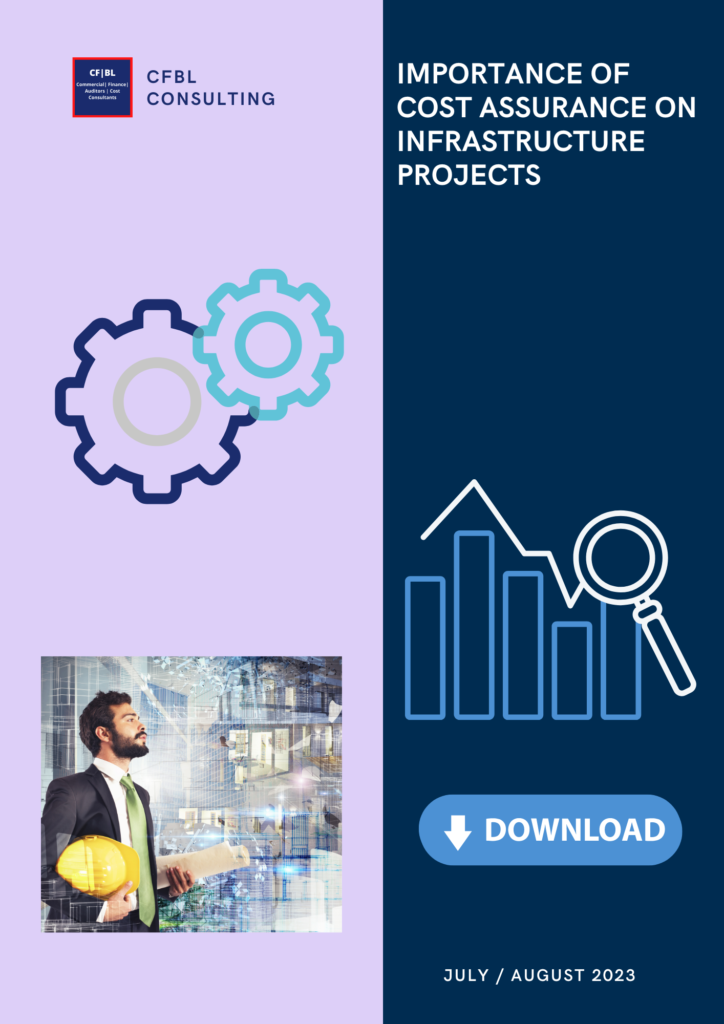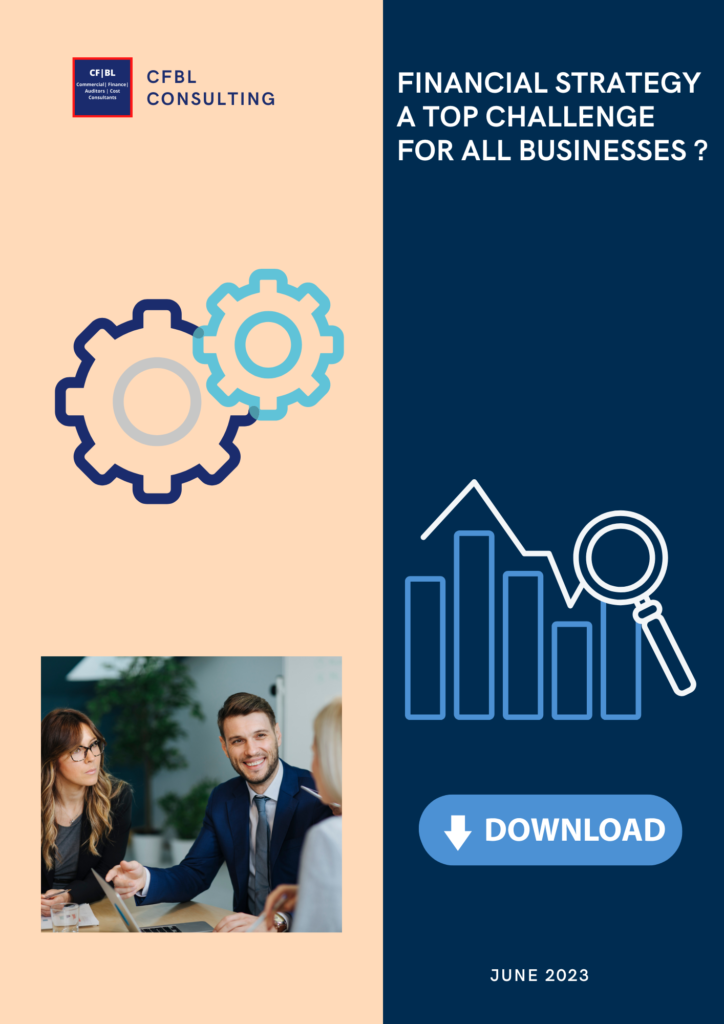Cecelia Fadipe, FCMA -CFBL Consulting
Challenges of Sustainable Development
The most important lesson is recognising that sustainability is a catalyst for transforming business models and building resilient operations while forcing companies to include environmentally friendly solutions into their fundamental business practices

Overview
In this report, CFBL Consulting investigates the critical role that sustainability plays in todays corporate environment and as an all-encompassing business strategy. This paper explores the relevance of sustainability as a fundamental factor that shapes the strategic direction of eco-friendly businesses worldwide, going beyond its status as a current trend and highlighting its transformative impact.
Introduction
- The need for sustainability in business is covered in this report along with how a business should address sustainability-related challenges.
- This includes research conducted and poll results that discusses and highlights relevant case studies related to sustainability.
- Moreover, Eco-friendliness derives from the concept of sustainable development, which is based on the ability to manage firm resources perpetually.
- The process of development involves a myriad of conflicting decisions that are necessary for the advancement of society.
- Additionally, to remain sustainable businesses must evolve business models and processes to meet technology or stakeholder demands to continue delivering future value to customers.
- To achieve development goals, businesses must continue to innovate, develop expertise, controls and govern the embracing and reporting of Eco-friendly solutions and KPIs.
- Another key development objective is to enhance the production of commodities, including goods and services, in order to meet growth needs and demand.
- For example while develop can create essential infrastructure assets this can result in the degradation of land, natural and environmental resources
- Therefore, the questions that come up are: what are business models, and how can organisations use them to change their operations in order to develop and market sustainable innovations?
Embracing Corporate Sustainability
The realisation that sustainability is not about stand-alone projects but rather a vital component of long-term corporate strategy and the fact that leadership and mindsets must change fundamentally is essential for take up and success.

Cost and Strategic Imperative
- Executives today must navigate a complicated and unprecedented mix of complex technology, business, social, and environmental issues.
- Sustainability-focused strategic leadership is needed to lead decarbonisation investment cost decisions and aid in resolving current, future, or emerging global challenges.
- Many believe that profitability risks today outweigh future sustainability risks, and are unwilling to commit to investments as a key component of their business plans.
- Some other leaders regard their companies’ shift to sustainability initiatives as fundamental to how the business can remain sustainable for the future
- For other leaders, although sustainability appears to be emphasised, they seldom ever drive that sustainability initiatives are integrated into all aspects of their business.
- Other businesses will merely produce reports to emphasise deemed green initiatives via their public relations departments green-washing
Return on Investment Versus Risk
- For most, because profitability and shareholder value are of top priority they will only make investment decisions when the financial return or risk of inaction is higher.
- Moreover, in other cases, it is only the risk of reputational damage, legal fines from non-compliance to sustainability laws, or a real risk to future revenue that will drive action.
- The necessity of having ongoing conversations with and learning from consumers and key stakeholders accounts for a large portion of sustainability’s strategic value.
- Businesses with sustainability as a key agenda are better positioned to respond to changes in their economic, social, environmental, and regulatory spheres.
- This awareness occurs through ongoing iteration and regular discussion with stakeholders and consumer-driven demands for change to practices
- Investing in technology to monitor environmental impact for example will make it easier to track emissions, and pollution levels, and adhere to new environmental laws.
Business Case for Eco-friendliness
Several findings refute the idea that sustainability activities have a negative impact on profitability achieved by emphasising how redesigning products to satisfy social and environmental needs, spurs innovation and opens up new business growth prospects.

Risk and Business Resilience
- Sustainability investing has the potential to stimulate innovation in addition to serving an important risk management role by mitigating risks to future profit. New commercial opportunities arise when goods and services are redesigned to satisfy growing or emerging consumer requirements or environmental norms.
- With its “Pollution Prevention Pays” programme, for instance, 3M incorporates sustainability into its innovation pipeline by proactively minimising waste and preventing pollution through waste recycling, equipment redesign, process modification, and product reformulation.
- The first workable, environmentally friendly substitute for hydrofluorocarbons is 3M’s Novec fire suppression fluid. A common misconception among corporate executives is that sustainability and profits are mutually exclusive. This is most likely a hangover from the 1970s and 80s when high-priced, low-quality environmental products failed to find a market and early socially conscious investing produced poor returns.
Investors and Shareholders
- Milton Friedman’s influential 50 years old, shareholder theory that the sole purpose of a business is profit is also likely the source of this. This prevailing wisdom has now changed. Today businesses are experiencing benefits in addition to financial gains resulting from enhanced competitive advantage and innovation.
- Businesses are also experiencing noteworthy cost reductions due to operational improvements related to environmental sustainability. Furthermore, investors now monitor company environmental, social, and governance (ESG) for strong performers
- As a result, investors can establish a correlation between improved ESG and future financial success. Hence, improving operational efficiency by better managing natural resources like water and electricity and cutting waste can lead to significant cost reductions and some studies state that businesses get an average internal rate of return on low-carbon investments of 27% to 80%.
Implementing Sustainable Strategies
A viable Eco-friendly strategy must not to put profits before people, or planet. Therefore emphasising the significance of incorporating sustainability objectives KPIs and maintaining responsiveness to current, emerging and future environmental risks is essential.

Strategic Principles for Strategy
Key Strategic Decisions
- Business viability can be impacted by any adverse action taken by a business. Consequently, every decision taken by business leaders needs to be strategic and thoroughly considered, taking into account risks, opinions, and direct input of the affected parties employees, customers, and shareholders.
Clear Specific Goals
- Having clear specific goals but remaining adaptable enough to pivot when internal or external circumstances call for a more complex or alternative strategy is essential to developing a viable business. Today success by gaining profits at any cost to people, communities, or the environment is detrimental.
Importance of Innovation
- Maintaining an ongoing focus on innovation and reinvention is essential for creating a viable business, particularly in the technology sector. The idea that the business is creating an innovative organisation needs to be reinforced in every business case or significant operating and investment decision-making.
Key Strategic Considerations
Aligning Core values
- Integrating strong core values among both staff and customers is essential. The business needs to ensure that the values of clients within its target market align with its fundamental business ideals, goals, and objectives.
Balancing Risk with Business Needs
- Establishing a suitable equilibrium and a reasonable risk appetite is essential to developing a sustainable business. To achieve the required level of balance, successful businesses only take measured risks particularly risks that could significantly impact cash flow, brand, or reputation.
Monitoring and Measuring Performance
- Businesses should scan and keep a close eye on their competitive business environment, they should always be scanning for risks and seeking opportunities to innovate and grow. The key to striking this equilibrium is to pay close attention to risks, and opportunities and measure actual performance with a plan to take corrective action.
Sustainability and Customers
Over the last five years, there has been a notable increase in the percentage of our customers who are buying ecologically friendly products (from 72% to 81%), indicating a shift in consumer behaviour towards sustainability.

Sustainability and Consumer Demand
- Customers are a key reason why business exists. Making sustainability a primary strategy can positively change the way customers interact with your company, whether you operate a B2C or B2B enterprise.
- Based on research carried out around 50% of consumers worldwide are willing to pay more for sustainable products, according to a recent Accenture survey.
- According to the study, 72% of respondents presently buy environmentally friendly products a considerable rise from 5 years ago. Additionally, 81% of respondents say they plan to buy even more sustainable products in the upcoming 5 years.
- Consumer expectations have increased as a result of the growing demand for sustainability, and businesses that do not live up to these standards risk reputational risks, losing clients and market share.
Sustainability and Competitive Advantage
- Furthermore, even modest sustainability efforts will begin to differentiate a business from its competitors. Using recycled materials and introducing eco-friendly packaging, for example, might appeal to customers who are concerned about the environment and provide a business with a competitive advantage over its rivals.
- A strategy of creating a unique selling proposition by collaborating with regional vendors and procuring goods locally will lower transportation-related emissions and benefit the community and environment.
- By participating in local corporate social responsibility programmes, such as donating a portion of profits to environmental causes businesses can build or facilitate a favourable brand image and competitive advantage.
- As a result, sustainability in a company is quickly evolving from a “nice-to-have” peripheral item to a “must-have” central business plan. Small businesses risk missing the opportunity if they fail to respond to the risks and opportunities promptly.
Using a Sustainability Framework
The understanding of business strategy models can be aided by tools such as the Business Model Canvas, nevertheless, new tools that balance social, economic, and environmental factors are needed by organisations for innovation that are focused on sustainability.

Innovation and Stakeholders
- Everything is up for grabs in the fight to lower emissions, consumption, and environmental impact.
- Businesses from many industries are trying to change their business models by making sustainability a top priority in their operations to aid in satisfying the expectations of stakeholders and ethical consumers.
- With the advancement of technology and civilisation many now live in cities and societies with higher standards of living and the population consumes more products and services, which increases waste and the impact of environmental pollution.
- The topic has also expanded dramatically in line with increasing demand, particularly in regards to the sustainability approach to innovation in business models, which was previously disregarded in traditional models that mostly concentrate on economic considerations.
- When evaluating the role and relationships of stakeholders in the process of sustainable innovation, it is important to note that businesses must not only meet the expectations of stakeholders but also the increasing demand for sustainability.
Design Thinking
- The five iterative steps of the DT process are based on the experiences of multiple projects as follows:
- Empathy – which forms the cornerstone of human-centered design development;
- The definition of insights and the scope of a significant challenge of the problem from the user’s perspective
- Ideation, which is the time to investigate a broad range of potential solutions and ideas
- A low-cost, low-resolution prototype that allows for the quick exploration of new possibilities
- Testing is the phase where feedback is gathered, solutions are redefined, and new user information is gained.
- Additionally, businesses may also use the Business Model Canvas in creating new ventures and in the modeling of options for small and large businesses. Its popularity suggests that it is a valuable and acknowledged instrument for comprehending and conveying a business model. However, to create a balance between the three pillars of sustainability—economic, social, and environmental businesses that seek sustainability-focused innovation need new tools.
Sustainable Supply Chains
Andrew Winston redefines supply chain sustainability ROI, advising businesses to focus on cost reduction, revenue growth, risk management, and intangible benefits like creativity and employee well-being.

Supply Chain Sustainability
- Supply chains are fundamental in meeting sustainability goals. They serve as the primary motivators for the business’ sustainability pledges and goals.
- Supply chain executives are pushing ahead with sustainability in mind, protecting their access to resources and building resilience while also discovering obstacles to fresh challenges s to investigate.
- While many leaders have long-term sustainability objectives for their supply chains, very few have the technology, data visibility, and all-encompassing programmes necessary to track their advancement.
- Their initiatives are beset by upfront costs and sometimes unclear decarbonisation business cases to justify the investment expenditure.
- During a Harvard Business Review to redefine return on investment for supply chain sustainability, Andrew Winston advised businesses to concentrate on these factors:
- Cost reduction: includes reducing wasteful material use, increasing productivity, and lowering carbon emissions.
- Revenue growth: investigating the effects of a sustainable supply chain on profitability, market share, and stock price.
- Risk management: constructing sourcing strategies and controlling key regulatory and compliance concerns.
- Examining how sustainability fosters creativity, employee well-being, consumer loyalty, brand reputation, and talent retention are examples of intangible benefits.
- Beyond the 20% who have already experienced these reductions, 55% of supply chain executives say they anticipate improved operational risk management over the next one to three years as a result of their ESG initiatives.
- According to another study, eight out of ten supply chain executives are keen on working harder to run supply chains sustainably. As part of their focus on ESG initiatives, executives are striving towards decarbonisation, fair trade, ethical sourcing, and efficient use of natural resources. They want to boost innovation, lower risks, and improve return on investment for sustainable supply chains.
Integrating Renewable Energy
According to the CDP (Climate Disclosure Project), 42 cities worldwide have achieved 100% renewable energy since 2018. Another 101 have achieved 70% renewable energy, and 22 have achieved 50% renewable energy.

Global Trends and Local Commitments
- There are many advantages of renewable energy. They include lower expenses, the potential to electrify previously unreachable areas, and raising opportunities and living conditions in new communities.
- The power to strengthen security over energy production, and a decreased reliance on geopolitical concerns., decreased and climate change is addressed by using renewable energy options.
- A poll of 26,000 people in 13 countries revealed that a sizable portion of respondents believe that it is critical to build a future that is entirely powered by renewable energy sources.
- According to the CDP, 42 cities worldwide have already achieved 100% renewable energy since 2018. Another 101 cities have achieved 70% renewable energy, and 22 more cities have achieved 50% renewable energy.
- The UK has shown support and very low opposition for all forms of renewable energy, according to BEIS’s ‘Wave Tracker’ surveys conducted over a number of years.
- At all levels action is taking place: 95 of local government leaders and councils have joined the UK100 network so far, pledging to ensure their communities’ futures by converting to 100% sustainable energy by 2050.
- However, the fluctuation of many renewable energy systems, including solar, wind power and upfront Capex investment costs remains a significant challenge.
- Similarly increased tidal, geothermal, and wave power that can generate electricity more reliably requires technological advancements that are presently unavailable and Capex investments.
Sustainability: Frequently Asked Questions (FAQs)
Analyse data from activities, resources, waste, and environmental impact for a thorough sustainability evaluation. Use it to pinpoint improvement areas and set a starting point for further action.
1. What kinds of business strategies are sustainable?
- Using renewable energy sources
- Putting programmes in place for recycling and waste reduction
- Utilising sustainable resources and manufacturing techniques
- Establishing just labour practises and aiding neighborhood communities
- Creating goods and services that have less of an environmental impact
2. How can a company begin putting sustainable initiatives into practice?
- Undertaking sustainability evaluation to determine the effects as of right now.
- Establishing definite sustainability goals that are in line with the goals and values of the business.
- ·Investing in more environmentally friendly products and methods of production or working
- Engaging staff members in sustainability initiatives by educating them.
- Collaborating with suppliers and stakeholders who are committed to sustainability.
3. Sustainable business strategies: what are they?
Integrating economic, social, and environmental factors into company operations is a key component of sustainable business strategies, which aim to maximise positive effects on the environment and society while ensuring long-term profitability.
4. What makes sustainable business practises crucial?
To meet consumer needs, improve social fairness, mitigate climate change, lessen environmental degradation, and ensure company resilience in a changing world, they are indispensable.
5. What advantages do environmentally friendly company practises offer?
- Cost reductions achieved by using resources effectively
- Increased client loyalty and brand recognition
- Gaining entry to new markets and customers looking for eco-friendly goods
- Decreased chance of future resource shortages and regulatory fines
- Attracting and keeping elite people who respect moral behaviour
6. How can a company assess whether its sustainable strategies are working?
- Monitoring key performance indicators (KPIs) for emissions, waste reduction, energy use, etc.
- Releasing frequent sustainability reports to openly share advancements and challenges.
- Pursuing third-party certifications to certify sustainable initiatives.
7. What obstacles lie in the way of putting sustainable business plans into practise?
- The upfront expenditures associated with making the switch to sustainable practises
- Employees or stakeholders who are resistant or unaware
- Supply chain management’s complexity in capturing sustainability data resources
- Striking a balance between immediate financial profits and long-term sustainability goals
8. How can small businesses use sustainable practises?
- Begin with little adjustments, such as converting to energy-efficient equipment or using less paper.
- Join forces with nearby companies to pursue joint sustainability projects.
- Look for grants or incentives from the government to start using eco-friendly practises.
- Draw in clients by showcasing eco-friendly initiatives and promoting their involvement.
References
- Aligning to Net Zero How CEOs can get on board with the transition. (n.d.). Available at: https://www3.weforum.org/docs/WEF_Aligning_to_net_zero_2021.pdf.
- Amdani, Y. (n.d.). Author Post: Can Sustainable Practices Generate Business? [online] Forbes. Available at: https://www.forbes.com/sites/forbesbooksauthors/2023/08/11/can-sustainable-practices-generate-business/?sh=43f14a395879 [Accessed 29 Nov. 2023].
- Amy (2023). Unlocking sustainability: A three step process for businesses to choose a sustainable supplier – Industry News. [online] Premier Construction News. Available at: https://premierconstructionnews.com/2023/09/15/unlocking-sustainability-a-three-step-process-for-businesses-to-choose-a-sustainable-supplier/ [Accessed 29 Nov. 2023].
- Chladek, N. (2019). The Importance of Business Sustainability Strategies. [online] Harvard Business School Online. Available at: https://online.hbs.edu/blog/post/business-sustainability-strategies
- Doherty, R., Kampel, C., Koivuniemi, A., Pérez, L. and Rehm, W. (2023). Unlocking the triple play: How integrating ESG priorities into growth strategies delivers sustainable profitable growth and outperforms peers | McKinsey. [online] www.mckinsey.com. Available at: https://www.mckinsey.com/capabilities/strategy-and-corporate-finance/our-insights/the-triple-play-growth-profit-and-sustainability.
- Galer, S. (n.d.). SAP BrandVoice: Sustainability Trends 2023: Goodbye Greenwashing, Hello Business Results. [online] Forbes. Available at: https://www.forbes.com/sites/sap/2023/01/31/sustainability-trends-2023-goodbye-greenwashing-hello-business-results/?sh=3571ac1c2205 [Accessed 29 Nov. 2023].
- Gavin, H. (2019). Integrating Renewable Energy: Opportunities and Challenges. [online] www.research.ox.ac.uk. Available at: https://www.research.ox.ac.uk/Article/2019-12-13-integrating-renewable-energy-opportunities-and-challenges.
- Environmental and sustainability metrics. (n.d.). Available at: https://www.nao.org.uk/wp-content/uploads/2015/10/Environmental-and-Sustainability-metrics-briefing-updated.pdf.
- Hendricks, D. (2023). Creating a Sustainable Business Model. [online] business.com. Available at: https://www.business.com/articles/how-to-create-a-sustainable-business-model/.
- Kurek, J., Brandli, L.L., Leite Frandoloso, M.A., Lange Salvia, A. and Mazutti, J. (2023). Sustainable Business Models Innovation and Design Thinking: A Bibliometric Analysis and Systematic Review of Literature. Sustainability, 15(2), p.988. doi:https://doi.org/10.3390/su15020988.
- Marti, E., Fuchs, M., DesJardine, M., Slager, R. and Gond, J.-P. (2023). A More Impactful Strategy for Sustainable Investing. [online] Harvard Business Review. Available at: https://hbr.org/2023/09/a-more-impactful-strategy-for-sustainable-investing.
- PricewaterhouseCoopers (n.d.). Sustainability Case Studies. [online] PwC. Available at: https://www.pwc.com/gx/en/services/sustainability/publications/casestudy.html.
- Panel®, E. (n.d.). Council Post: 12 Essential Strategies for Building a Sustainable Business. [online] Forbes. Available at: https://www.forbes.com/sites/forbesbusinesscouncil/2022/02/25/12-essential-strategies-for-building-a-sustainable-business/?sh=7083c1ee7d5e [Accessed 29 Nov. 2023].
- TCS (n.d.). Sustainable Business Transformation: Building a Better World. [online] www.tcs.com. Available at: https://www.tcs.com/what-we-do/services/sustainability-services/article/sustainable-business-transformation-european-organizations [Accessed 29 Nov. 2023].
- Vijayendra, K. (n.d.). Council Post: Why Should Small Businesses Adopt Sustainability As A Core Business Strategy? [online] Forbes. Available at: https://www.forbes.com/sites/forbesbusinesscouncil/2023/07/26/why-should-small-businesses-adopt-sustainability-as-a-core-business-strategy/?sh=2330b4eb2099 [Accessed 29 Nov. 2023].
- UK2023-11-20T04:00:00+00:00, R.B. (n.d.). Electrification hopes sidelined in RSSB sustainability strategy. [online] Railway Gazette International. Available at: https://www.railwaygazette.com/uk/electrification-hopes-sidelined-in-rssb-sustainability-strategy/65365.article [Accessed 29 Nov. 2023].
- Tenney, M. (2022). What is a Sustainable Business Strategy? – Business Leadership Today. [online] Business Leadership Today. Available at: https://businessleadershiptoday.com/what-is-a-sustainable-business-strategy/.
- Walsh, D. (2021). 4 Strategies for Sustainable Business. [online] MIT Sloan. Available at: https://mitsloan.mit.edu/ideas-made-to-matter/4-strategies-sustainable-business.




